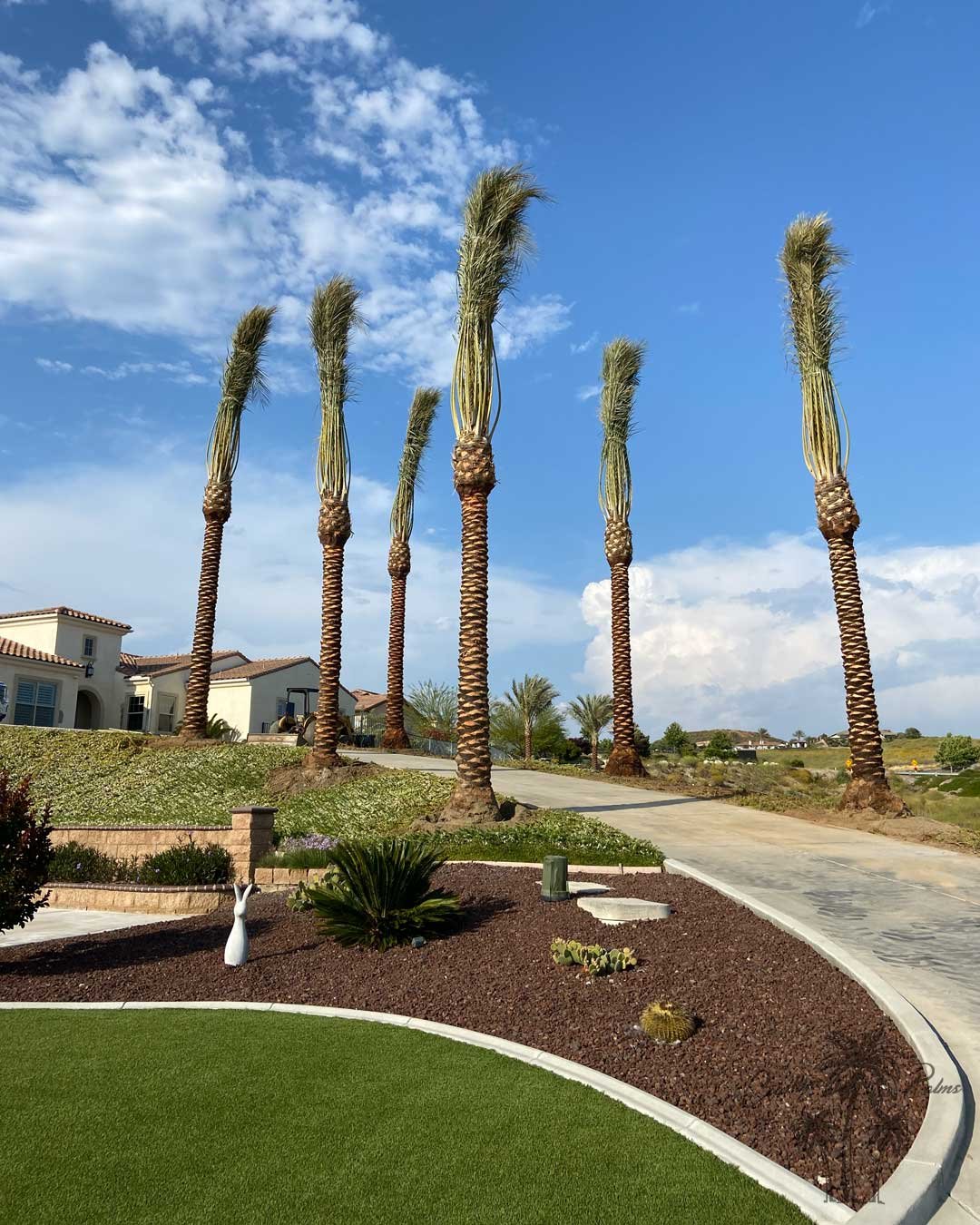Date Palm
The date palm (Phoenix dactylifera) is a flowering plant species in the palm family, Arecaceae, renowned for producing the highly nutritious and sweet date fruit. This tree has been cultivated for thousands of years, with origins in the Middle East and North Africa, and it is well-suited to hot, arid climates. Date palms are prominent in Middle Eastern, North African, and South Asian cultures, both as a food source and as part of traditional medicine, landscaping, and economic trade.
Physical Description
Height: Date palms typically reach heights of 15–25 meters (49–82 feet).
Leaves: The tree has long, feather-like, pinnate leaves that can grow up to 3–6 meters (10–20 feet) in length. Leaves emerge from a single growing point at the top of the trunk in a dense canopy.
Trunk: The trunk is thick and textured, covered with the stubs of old leaf bases, giving it a rugged appearance.
Root System: Date palms have a fibrous root system and deep roots, helping them access water in arid environments.
Reproduction and Pollination
Date palms are dioecious, meaning that individual plants are either male or female. Only female trees produce fruit, and artificial pollination is often used to improve crop yields, as natural pollination is generally inefficient. The process involves transferring pollen from male trees to female flowers manually.
Date Fruit
Appearance: Dates are oval-cylindrical and vary in color from bright red to yellow and deep brown, depending on the variety.
Nutritional Content: Dates are highly nutritious, rich in natural sugars, fiber, vitamins (such as B-complex vitamins), and minerals like potassium, magnesium, and copper.
Uses: They are consumed fresh, dried, or processed into various forms such as date syrup, paste, and sugar. Dates are also used in desserts, baked goods, and savory dishes.
Varieties
There are hundreds of date varieties, with some of the most popular including:
Medjool: Known for their large size, soft texture, and sweet, caramel-like flavor.
Deglet Noor: Semi-dry and smaller, these dates are less sweet but often preferred for cooking.
Ajwa: Found mainly in Saudi Arabia, prized for its unique taste and religious significance.
Growing Conditions
Climate: Date palms thrive in hot and dry climates, enduring temperatures over 50°C (122°F) and occasional drought.
Water Needs: Although drought-tolerant, date palms require regular irrigation for high fruit yield. They grow best in regions with low humidity and saline soil tolerance.
Lifespan and Harvesting
Date palms can live and produce fruit for over 100 years. Harvesting typically takes place from late summer to early autumn, depending on the region and variety. Once dates are harvested, they may be processed, dried, or packed fresh for sale and export.
Cultural and Economic Significance
In addition to their role in nutrition, date palms are symbols of hospitality and fertility in Middle Eastern culture. They are often given as gifts and are a staple during Ramadan and other celebrations. Economically, dates are a significant agricultural product for many countries, particularly in the Middle East and North Africa, contributing substantially to local and global markets.
The date palm is a fascinating tree, combining resilience with a valuable fruit, and holds a central place in both history and modern agriculture.




















